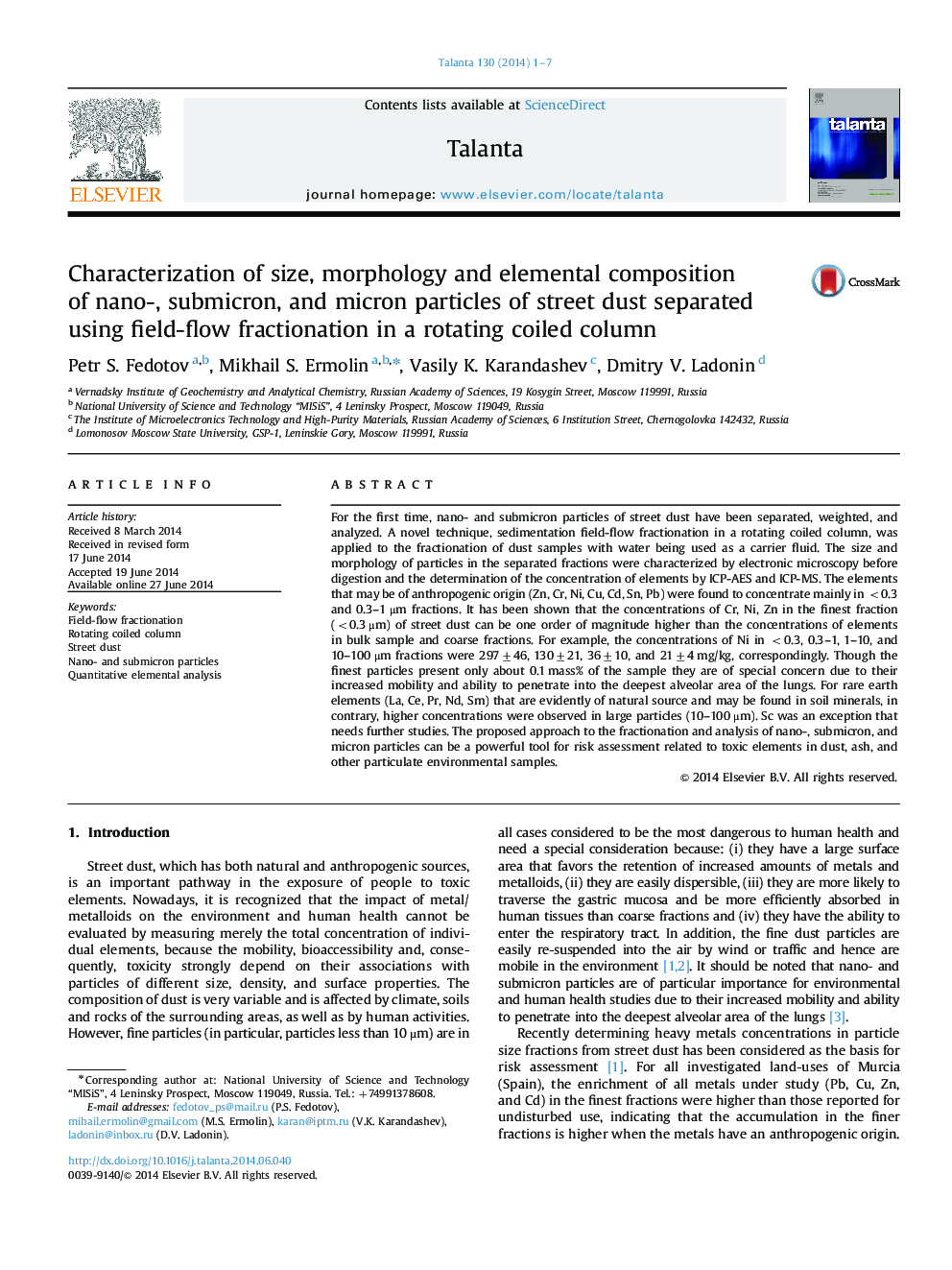| Article ID | Journal | Published Year | Pages | File Type |
|---|---|---|---|---|
| 1243553 | Talanta | 2014 | 7 Pages |
•Nano-, submicron, and micron particles of street dust samples were separated.•Fractions were weighted, characterized, and quantitatively analyzed.•Zn, Cr, Ni, Cu, Cd, Sn, Pb were found to concentrate in <0.3 and 0.3–1 μm fractions.•Higher contents of La, Ce, Pr, Nd, Sm were observed in coarse particles (10–100 μm).
For the first time, nano- and submicron particles of street dust have been separated, weighted, and analyzed. A novel technique, sedimentation field-flow fractionation in a rotating coiled column, was applied to the fractionation of dust samples with water being used as a carrier fluid. The size and morphology of particles in the separated fractions were characterized by electronic microscopy before digestion and the determination of the concentration of elements by ICP-AES and ICP-MS. The elements that may be of anthropogenic origin (Zn, Cr, Ni, Cu, Cd, Sn, Pb) were found to concentrate mainly in <0.3 and 0.3–1 μm fractions. It has been shown that the concentrations of Cr, Ni, Zn in the finest fraction (<0.3 μm) of street dust can be one order of magnitude higher than the concentrations of elements in bulk sample and coarse fractions. For example, the concentrations of Ni in <0.3, 0.3–1, 1–10, and 10–100 μm fractions were 297±46, 130±21, 36±10, and 21±4 mg/kg, correspondingly. Though the finest particles present only about 0.1 mass% of the sample they are of special concern due to their increased mobility and ability to penetrate into the deepest alveolar area of the lungs. For rare earth elements (La, Ce, Pr, Nd, Sm) that are evidently of natural source and may be found in soil minerals, in contrary, higher concentrations were observed in large particles (10–100 μm). Sc was an exception that needs further studies. The proposed approach to the fractionation and analysis of nano-, submicron, and micron particles can be a powerful tool for risk assessment related to toxic elements in dust, ash, and other particulate environmental samples.
Graphical abstractFigure optionsDownload full-size imageDownload as PowerPoint slide
